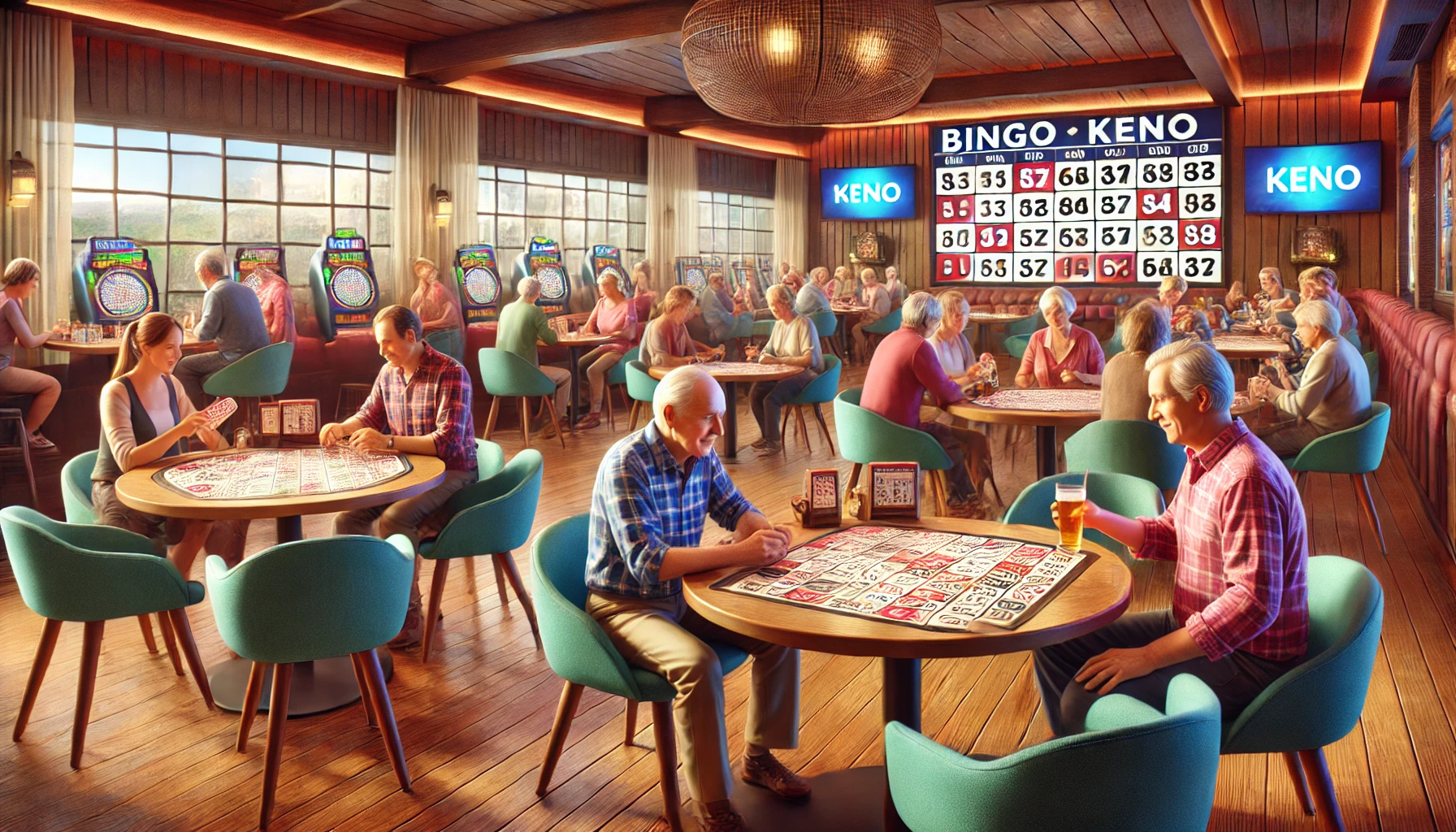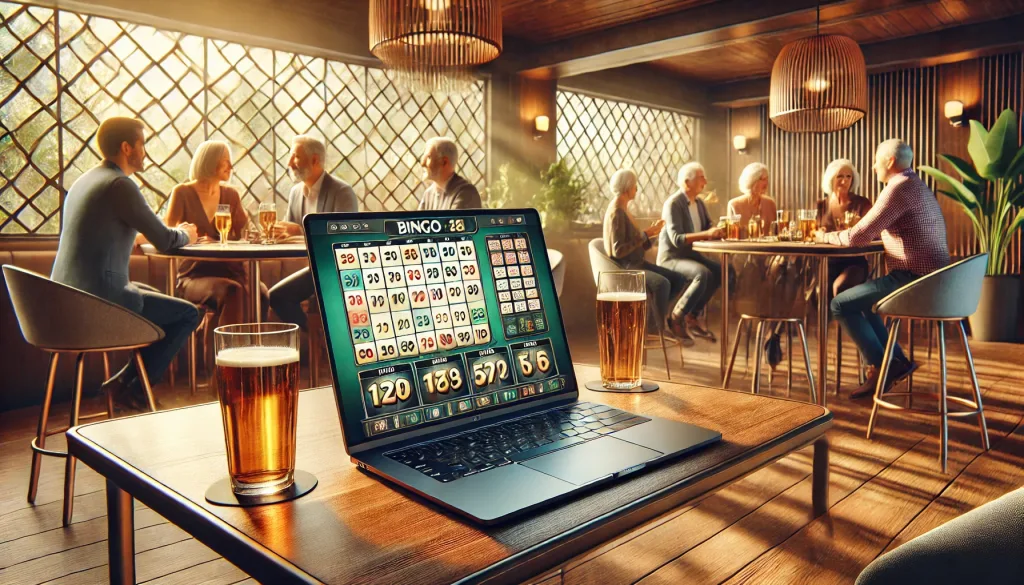
Gender Distribution in Keno and Bingo: Who Plays More?
Gender dynamics in gambling have always intrigued researchers and enthusiasts alike. Two popular lottery-style games, Keno and Bingo, offer unique insights into how men and women engage with gambling activities. These games, with their distinct formats and appeals, have carved out specific niches among different demographics. Exploring these gender trends helps us understand the motivations and preferences that drive participation in such games.
Introduction to Gender Preferences in Lottery Games
The gender dynamics of gambling have intrigued researchers and industry professionals for years. Keno and Bingo, both popular lottery-style games, showcase distinctive gender-based participation trends. This analysis explores who plays these games more frequently and why. Gender-based analysis in gambling provides insights into cultural, social, and psychological factors that influence game preferences. By understanding these trends, we can appreciate the diversity of players and their motivations.
Research into gender preferences reveals how cultural upbringing, societal expectations, and personal interests shape gambling habits. Men and women approach gaming with unique perspectives. Men often seek high-stakes thrills and the opportunity to compete, while women tend to prioritise social interaction and entertainment value. These differences are particularly evident in the contrasting appeal of Keno and Bingo, highlighting the need to cater to diverse player preferences in the gambling industry.
Understanding Keno and Bingo
Keno and Bingo cater to diverse audiences, yet their appeal varies significantly based on demographic factors. Keno, a fast-paced number game often played in casinos and online platforms, is favoured by individuals seeking excitement and instant results. In contrast, Bingo, known for its social engagement, often involves communal settings such as Bingo halls or interactive online chat rooms. These differences highlight the importance of considering the unique features of each game when analysing player preferences.
The appeal of Keno lies in its simplicity and immediacy, which resonates with players looking for quick and engaging experiences. On the other hand, Bingo’s structured gameplay and community-driven atmosphere make it a staple among players who enjoy a slower, more relaxed pace. Both games serve as a reflection of the psychological needs they fulfill for their respective audiences. The contrasting dynamics of these games offer a lens into the motivations behind gendered gaming preferences.
The Demographics of Keno Players
Studies consistently show that Keno players are predominantly male, making up approximately 60-70% of the player base globally. The allure of Keno lies in its simplicity and the fast-paced environment, which aligns with preferences often observed in male players. The game’s straightforward rules and quick outcomes make it a popular choice for those seeking a brief, engaging gambling experience.
From an evolutionary perspective, men often engage in activities that test risk-taking and decision-making skills, which are intrinsic to Keno’s gameplay. The game provides a platform for calculated risk, often associated with traditional male roles in competitive environments. Furthermore, the visibility of Keno in sports betting venues and its integration with other gambling activities amplify its appeal among male audiences.
Why Men Gravitate Towards Keno
Several factors explain this trend. The competitive nature of Keno, combined with its association with sports betting in some cultures, aligns with activities traditionally enjoyed by men. Additionally, the anonymity of Keno appeals to those who prefer solo gaming experiences. Furthermore, the presence of Keno in casinos and sports betting venues often creates a space predominantly frequented by male gamblers.
Keno also offers a wide range of betting options, allowing players to experiment with strategies and increase their stakes. This element of control and risk-taking is particularly attractive to men, who often engage with games that test their predictive abilities and luck. Understanding these dynamics sheds light on why Keno remains a male-dominated domain despite the growing diversity of gambling audiences.
Bingo: A Female-Dominated Arena
In contrast, Bingo is overwhelmingly popular among female players, with women accounting for 70-80% of the global player base. Its community-focused structure and leisurely pace make it a preferred choice for many female gamblers. Bingo’s appeal lies not just in the game itself but also in the environment it fosters, encouraging interactions and friendships.
Bingo’s history as a social event played in community halls and local clubs has cemented its association with women. Many players are drawn to its social aspects, enjoying the shared excitement and support among participants. Additionally, the perception of Bingo as a low-pressure game with modest stakes makes it more accessible to women who may shy away from riskier gambling options.
The Social Aspect of Bingo
Bingo halls and online Bingo communities foster a strong sense of camaraderie. This social element, along with the relatively low stakes, creates a welcoming environment, particularly for women seeking entertainment rather than high-stakes gambling. Women often use Bingo as a form of relaxation, enjoying the friendly competition without the pressure of significant financial risks.
Moreover, the marketing strategies for Bingo often target female audiences through advertisements emphasising community, fun, and rewards. Online platforms have further enhanced this trend by introducing themes, customisation options, and gamified features that resonate with women. These developments highlight how Bingo continues to adapt while maintaining its core appeal to female players.

Gender Trends in Online Versus Offline Play
The shift to online gambling has slightly altered these traditional gender patterns. In online platforms, gender preferences blur as accessibility and anonymity appeal to broader demographics. The digital transformation of Keno and Bingo has opened new avenues for engagement, attracting a more diverse range of players.
In addition to breaking down barriers, online platforms have introduced gamification and customisation options, which attract younger and tech-savvy players. This technological evolution makes gambling more inclusive and dynamic, catering to players who may not have engaged with traditional Bingo halls or Keno machines. As these trends continue, understanding the nuances of player preferences in digital spaces will be crucial for industry stakeholders.
How Technology Shapes Participation
Online Bingo platforms, for instance, attract a younger audience, including men, thanks to gamification and modern features. Similarly, online Keno’s convenience and varied betting options have encouraged more women to participate. These platforms also provide a safer and more private gaming environment, breaking down traditional barriers associated with in-person gambling.
Additionally, technological innovations such as mobile apps, live chat features, and interactive designs have made these games more appealing across genders. This shift underscores the importance of adapting to changing preferences and leveraging technology to enhance the player experience. As gambling continues to evolve, understanding these gender trends will be key to meeting the needs of a diverse audience while promoting responsible gaming practices.
